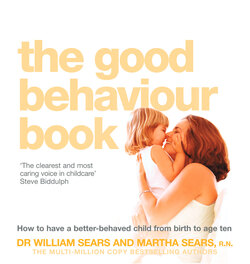Читать книгу The Good Behaviour Book - Марта Сирс - Страница 17
6. Model Discipline
ОглавлениеA model is an example your child imitates. The mind of a growing child is a sponge, soaking up life’s experiences; it’s a video camera capturing everything a child hears and sees, storing these images in a mental vault for later retrieval. These stored images, especially those frequently repeated by significant persons in the child’s life, become part of his personality – the child’s self. So one of your jobs as a parent is to provide good material for your child to absorb.
“But I can’t be perfect.” Of course not. No parent is perfect. While writing this book, Martha and I would often say, “We know all this stuff and we still keep making mistakes.” In fact, it’s unhealthy to model perfection – a goal that neither parent nor child can meet (though many are crippled by trying). It’s the overall impression that your child receives that counts, not the occasional blunders or outbursts. If a parent is habitually angry, anger becomes part of the child’s self. The child learns that this is the way people deal with life. If a parent models happiness and trust, with an occasional angry tirade, the child sees a healthier model: people are happy most of the time, but sometimes, difficulties make you angry. You handle the situation and go back to being happy.
Parents, you are the first people your child knows. You are the first caregivers, authority figures, playmates, male and female. You set the standard for your child’s attitude toward authority, her ability to play with peers, and her sexual identity. Part of yourself becomes part of your child. Yes, much of a child’s behaviour is genetic. More than one parent has been known to remark, “He came wired that way”, but much is also influenced by the child’s behavioural models. Throughout this book we will show you how to provide your child with a disciplined model.
